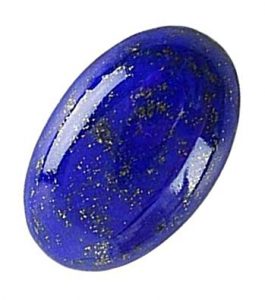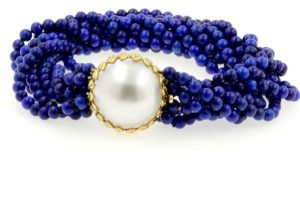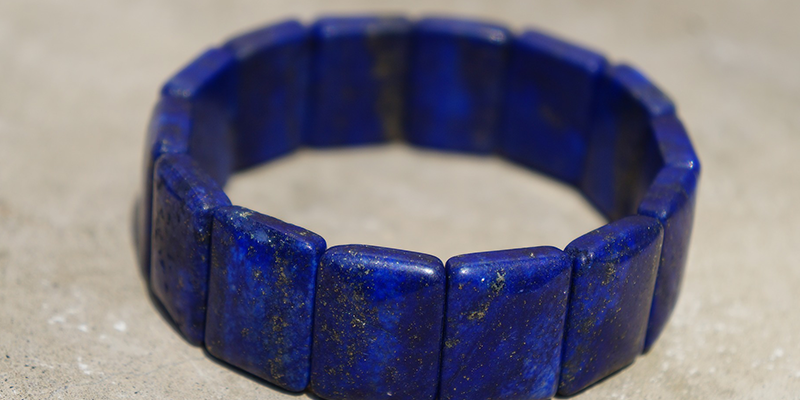Most calendar months have two birthstones attributed to them. In September the best known birthstone is the sapphire, while the alternative birthstone for September is lapis lazuli.
What is lapis lazuli?
 When you picture a sapphire, the chances are that you see a dazzling blue stone, but in fact sapphires come in many colours. The lapis lazuli however does not. This semi-precious gemstone only comes in blue – but there are, of course, many shades of blue. Its colour can range from deep blue to light blue to turquoise blue and to a greenish blue, with the most prized being a deep indigo blue.
When you picture a sapphire, the chances are that you see a dazzling blue stone, but in fact sapphires come in many colours. The lapis lazuli however does not. This semi-precious gemstone only comes in blue – but there are, of course, many shades of blue. Its colour can range from deep blue to light blue to turquoise blue and to a greenish blue, with the most prized being a deep indigo blue.
Unlike most gemstones, Lapis lazuli is a rock, which means it is made up of multiple minerals, most typically a combination of three: lazurite (blue), calcite (white) and pyrite (gold, often called Fool’s Gold). The most valuable lapis has no flecks of white calcite visible, though a scattering of gold pyrite flecks are quite acceptable. Too much calcite makes the lapis patchy and faded in tone and unappealing to most buyers. Too much pyrite makes the gemstone dull and greenish in hue.
Although this is a rock, both lazurite and calcite are crystalline minerals, which means that it is semi-translucent to opaque, allowing some play of light.
Where do you find lapis lazuli?
The traditional source of the finest lapis lazuli is the mountains of Afghanistan, something that hasn’t change in millennia. Indeed, lapis has been coveted by mankind and used in jewellery and decoration for more than 6,500 years. It is also found in Chile and in Siberia.
What is lapis lazuli used for?
 The stones are usually cut as cabochon, tablets or beads, or fine flat inlays for use in jewellery, furniture and accessories, from chess boards to sculpture. During the renaissance, the stone was ground down for use by artists in making ultramarine blue, a valuable pigment of unrivalled brightness and stability.
The stones are usually cut as cabochon, tablets or beads, or fine flat inlays for use in jewellery, furniture and accessories, from chess boards to sculpture. During the renaissance, the stone was ground down for use by artists in making ultramarine blue, a valuable pigment of unrivalled brightness and stability.
Today, as well as being a most accessible stone for beads, brooches and pendants, it is still used in fine jewellery to create statement pieces of dazzling beauty.
For those who believe in the healing properties of crystals, lapis is used to help those meditating connect more deeply with their inner self, to develop self-awareness and enhance emotional intelligence.

